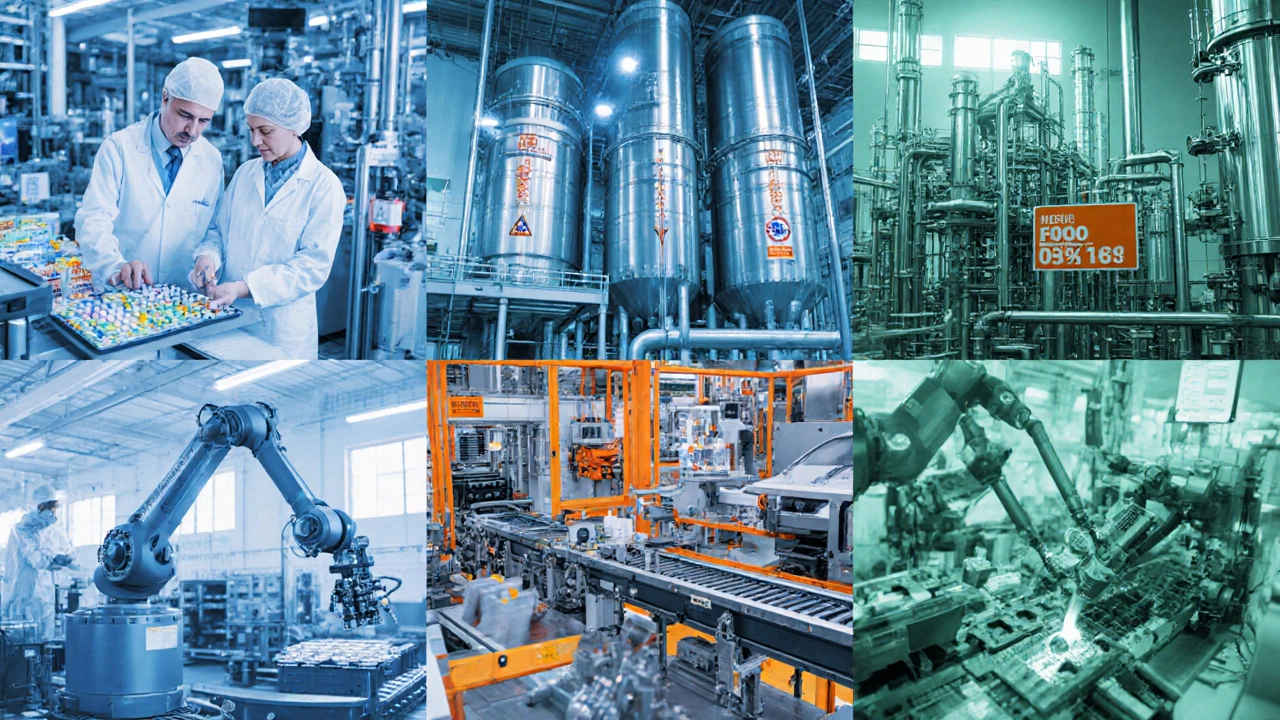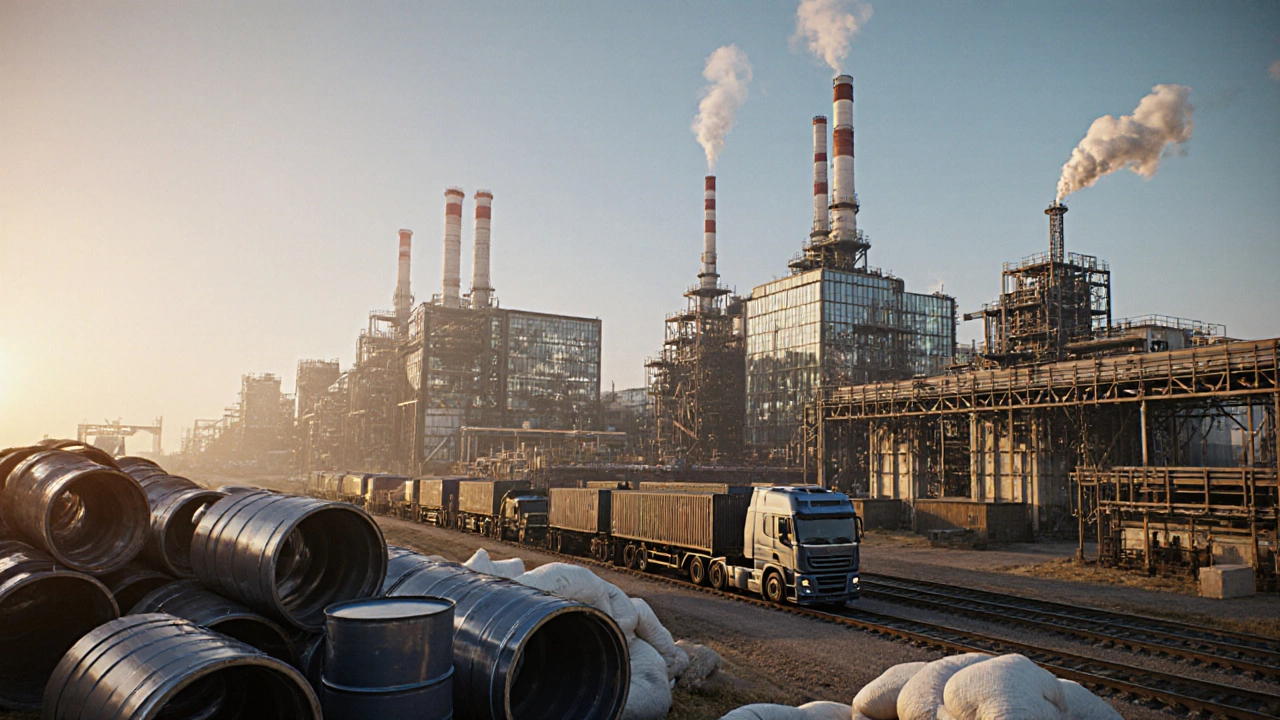Manufacturing Profitability Calculator
Your Manufacturing Metrics
Profitability Analysis
Enter your data to see analysis results
| Category | Healthiest Range | Your Result |
|---|---|---|
| Operating Margin | 10-20% | |
| Capital Intensity | Below 0.5 | |
| Cash Conversion Cycle | Under 45 days |
Key Insights
When you start looking at a manufacturing business that turns raw materials into finished goods on a large scale, the first question most investors ask is: how much cash does it actually generate? In the United States, a handful of sectors consistently out‑perform the rest, delivering double‑digit operating margins and robust cash flow. If you’re hunting for the profitable manufacturing USA niche, understanding the data behind these leaders is essential.
Measuring profitability: the metrics that matter
Profitability isn’t just about revenue; it’s about how efficiently a company converts that revenue into earnings. The three core numbers you’ll see repeated across reports are:
- Operating margin - earnings before interest and taxes divided by net sales. It shows how well core operations perform.
- Return on assets (ROA) - net income divided by total assets. It measures how effectively a firm uses its capital base.
- Cash conversion cycle - the time it takes to turn inventory into cash. Shorter cycles free up working capital.
For a manufacturing business, an operating margin above 10 % usually signals a healthy competitive position, while margins north of 15 % indicate a niche with strong pricing power or low capital intensity.
Top profitable manufacturing sectors in the USA (2024‑2025)
Based on SEC filings, industry reports from IBISWorld, and the latest Census Bureau data, the following sectors topped the profitability charts in 2025:
- Pharmaceutical manufacturing - average operating margin 18.2 %.
- Specialty chemicals - average operating margin 16.5 %.
- Medical device manufacturing - average operating margin 15.8 %.
- Electronics assembly - average operating margin 14.3 %.
- Food processing - average operating margin 13.7 %.
- Automotive components - average operating margin 12.9 %.
These numbers come from a blend of large‑cap players (e.g., Pfizer, Dow, Medtronic) and midsize specialists that dominate niche markets. The common thread is high value‑added output and relatively stable demand.
Why these sectors dominate the profit pool
Three strategic factors explain the margin edge:
- Barriers to entry: Pharmaceuticals and specialty chemicals require heavy R&D spend, regulatory approvals, and skilled labor, limiting new competitors.
- Pricing power: Medical devices and food‑grade ingredients often benefit from brand trust and compliance certifications, allowing firms to command premium prices.
- Supply‑chain control: Companies that own upstream material sources-like semiconductor assemblers that partner closely with silicon wafer producers-can lock in costs and protect margins.
In contrast, commodity‑heavy sectors such as steel or basic plastics experience tighter spreads because raw‑material prices swing wildly and substitutes are easy to find.

Regional hotspots within the United States
Profitability also clusters geographically. Here’s a quick snapshot:
- Mid‑Atlantic (Pennsylvania, New Jersey) - hub for pharma and specialty chemicals.
- North‑East (Massachusetts, Connecticut) - leading medical device clusters, especially around Boston.
- Mid‑West (Michigan, Ohio) - strong automotive components supply chain with higher margins for high‑tech parts.
- West Coast (California, Washington) - electronics assembly and biotech firms benefiting from tech talent pools.
When scouting a new plant location, consider both the local talent pool and the state‑level incentives, which can shave a few percentage points off your effective tax rate.
Key financial metrics to watch when evaluating a target
Every potential acquisition or investment should be scored against a checklist. The most telling numbers are:
| Metric | Healthy Range | Why it matters |
|---|---|---|
| Operating margin | 10‑20 % | Shows core efficiency without financing effects. |
| ROA | 5‑12 % | Indicates asset utilization. |
| Debt‑to‑Equity | ≤0.8 | Measures financial risk. |
| Cash conversion cycle | ≤45 days | Short cycles free cash for growth. |
| Revenue growth (3‑yr CAGR) | ≥5 % | Shows market traction. |
Checklist for evaluating a manufacturing business
- Confirm the sector’s average margin benchmark.
- Validate any regulatory approvals (FDA, EPA) are current.
- Map the supply chain: identify single‑source vs. diversified inputs.
- Review labor costs and union agreements in the plant’s state.
- Run a sensitivity analysis on raw‑material price swings.
- Assess the company’s IP portfolio-patents can be a hidden moat.

Common pitfalls and how to avoid them
Even within high‑margin sectors, founders and investors stumble over a few repeat mistakes:
- Over‑leveraging: Taking on debt to fund rapid expansion can turn a 15 % margin into a loss when interest rates rise.
- Neglecting compliance costs: In pharma and chemicals, a single FDA warning can halt production for months.
- Ignoring technology obsolescence: Electronics assemblers that fail to upgrade to newer node technologies lose customers to faster, cheaper rivals.
- Underestimating talent scarcity: High‑skill roles in biotech and medical devices command salaries that can erode margins if not managed.
Address each risk with a mitigation plan-whether it’s a hedging program for interest, a compliance audit schedule, or a partnership with a local university for talent pipelines.
Quick comparison of the top sectors
| Sector | Avg. Operating Margin | 3‑yr Revenue CAGR | Capital Intensity* (CapEx / Rev) |
|---|---|---|---|
| Pharmaceutical manufacturing | 18.2 % | 7.1 % | 0.42 |
| Specialty chemicals | 16.5 % | 5.8 % | 0.38 |
| Medical devices | 15.8 % | 6.3 % | 0.45 |
| Electronics assembly | 14.3 % | 4.9 % | 0.34 |
| Food processing | 13.7 % | 3.5 % | 0.30 |
| Automotive components | 12.9 % | 4.2 % | 0.41 |
*Capital intensity shows how much the sector needs to reinvest to keep up with technology and capacity.
In short, if you’re after the highest profit potential, aim for pharma, specialty chemicals, or medical devices. If you need a balance of margin and lower regulatory hassle, food processing and electronics assembly are solid alternatives.
Next steps for aspiring investors
- Download the latest SEC 10‑K filings for the top 10 players in your target sector.
- Run a Monte Carlo simulation on raw‑material price volatility.
- Contact state economic development offices to learn about tax credits.
- Engage a niche industry consultant for a deep‑dive on IP and regulatory pipelines.
Which U.S. state offers the best tax incentives for pharmaceutical manufacturing?
Pennsylvania and New Jersey lead the pack, offering credits up to 6 % of qualified R&D spend plus job‑creation abatements. The exact rate depends on the size of the investment and the number of new high‑skill jobs created.
How does capital intensity affect profitability?
Higher capital intensity means more money tied up in plant, equipment, and technology. If a firm can keep utilization rates above 80 %, the fixed cost burden dilutes, preserving margin. Low‑intensity sectors can scale faster with less upfront spend.
Are there any emerging manufacturing niches that could surpass current leaders?
Battery cell production and advanced composites are gaining traction. Early entrants have reported operating margins approaching 13‑14 % as demand for electric‑vehicle components accelerates, but the sector is still capital‑heavy and faces supply‑chain bottlenecks.
What is a realistic cash conversion cycle for a food‑processing plant?
Top performers keep the cycle under 30 days by negotiating fast payment terms with distributors and using just‑in‑time inventory for perishable ingredients.
Should I prioritize companies with higher ROA or higher operating margin?
Operating margin tells you how profitable the core business is, while ROA captures how well assets are used. For capital‑intensive sectors, ROA is a better health check; for low‑capex sectors, focus on margin.
Armed with these numbers and filters, you can zero in on the most profitable manufacturing business in the United States and avoid the traps that sink less‑prepared investors.
